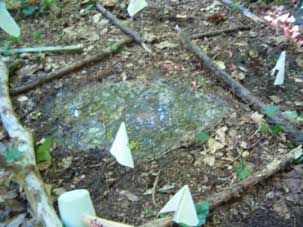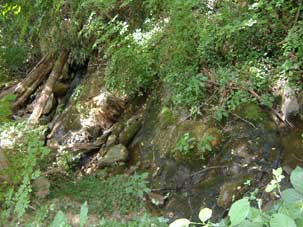-
When selecting an area to mark out plots, make sure that the soil, plant
diversity, and sunlight are about the same; try to avoid rocks, roots and slopes
(see figure 5)
-
Always wash the core
sample testers between uses
-
Bring a mallet when
taking the soil core samples incase
the soil is hard and dry
-
Be sure to take all
soil extractions at the same time, since the soil is still alive and
changing
-
Always check to make
sure that the stream water is relatively clean and that each batch of water
has a similar amount of turbidity; be sure to
take all of the water from the same place for all trials
(see figure 3)
-
Be sure to allow the
water to absorb into the ground before adding more
(see figure 4)
-
We recommend using
plastic zip-lock bags
for the soil core samples
-
For baking the soil samples, we
recommend creating 6 aluminum foil bowls. To make these bowls get a strip of
aluminum foil (approx. 1ft by 1ft), place your fist in the center of the
sheet and then scrunch around your fist to create a bowl
-
Always use new bags
if you choose to put the dehydrated soil back into plastic bags to measure
the new mass
so that the results are not skewed by any excess water/soil remaining in the old
bags
-
Remember to wash off
all test tubes, stirring rods, spot plates, and other materials to avoid
contamination
-
Always use oven mitts
to remove the trays from the oven
-
For the most accurate data, take daily samples from the positive
and negative controls as well
-
We found the La Motte
Test Kit to be extremely useful in conducting our chemical experiment
http://www.lamotte.com/
-
If you happen to
forget to do pH tests on the soil before baking them, you can always
re-hydrate the soil samples using distilled water (be sure to add the exact
amount of water that was baked out and allow it to fully absorb into the
soil prior to conducting any experiments)
|

figure
4: Be sure
to wait until the water has absorbed into the soil before adding more

figure
5: Make sure
that all of the plots are labeled with flags, and each plot has
approximately the same amount of sunlight, plant diversity and soil type |




